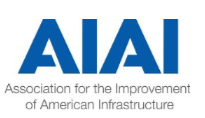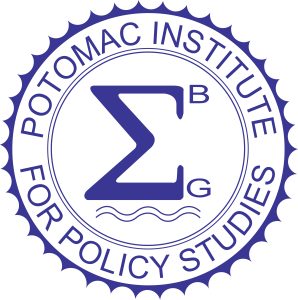Cyber Safety Summit
ABOUT THIS EVENT
Establishing A Cyber Safety Standard of Care for the Built Environment
A select gathering of academia, professional organizations, infrastructure owners, and the Nation’s leading companies providing engineering and cybersecurity services committed to protecting human safety in an automated society.
WHERE
National Academy of Sciences
2101 Constitution Ave NW, Washington, DC 20418
WHEN
Thursday
March 19, 2026


A CALL TO ACTION
Emerging Global Need for a Cyber Safety Standard of Care
The rapid adoption of connected technologies across facilities and infrastructure is enhancing operational efficiency, user experience, sustainability, and security—spanning homes, buildings, transportation, healthcare, manufacturing, and consumer devices.
As information technology (IT) converges with operational technology (OT) to form cyber-physical systems (CPS), these integrated environments offer powerful new efficiencies and productivity. However, they also introduce novel risks and vulnerabilities, such as the overreliance of unsecured operational automation, which provides bad actors new disruption vectors with more exploitation pathways directly threatening public health, safety, and essential services.
Recent cyberattacks targeting our Nation’s critical infrastructure sectors – water systems, power grids, ports, pipelines, and transportation systems – have prompted multiple federal safety warnings.
These alerts underscore the urgent need for private sector owners and operators to invest in robust cyber protections that safeguard the public interest.
The global engineering and construction community must act now to establish formal Standards of Care for cyber safety to provide private sector owners with a set of foundational risk mitigation principles guiding the planning, design, construction, and operational phases of all future projects within the built environment.
The 2026 Cyber Safety Summit will convene subject matter experts and thought leaders to define what constitutes “reasonable knowledge, technical competence, and care” practiced within cybersecurity and control systems engineering.
Participants will break out into working groups to propose core requirements for internships, examinations, and admissions criteria that could form the basis for a future professional license in cyber safety design.
At the conclusion of the event, the CyberSafetySummit will formally present the consortium’s recommended standardized cyber safety elements relevant to networked, control systems engineering, and operational automation design to the NCEES Principles and Practice of Engineering Examination – Control Systems CBT Specifications for inclusionary consideration.
Additionally, selected technical papers will be presented to showcase engineering applications and best practices that enhance cyber safety within critical infrastructure and facility systems.

Event Partner/Sponsors






The Summit is seeking corporate sponsors to help ensure participants can attend the event at no cost. If you are interested in supporting this initiative through a donation or by sponsoring specific event costs, please email contact@cybersafetysummit.org.
Sponsorship opportunities include covering morning coffee, a catered lunch, and the evening reception. In appreciation of sponsorship support, your organization will receive formal recognition during each sponsored event.
Summit Agenda
Join a day of collaboration on cyber safety standards for the engineering, construction and facility management professionals.

March 19, 2026
7:30-8:00
Registration opens
8:00-8:30
Welcome by National Academy of Engineering –Recognition of Sponsors
8:30-9:00
National Threat Intelligence Presentation
9:00-10:00
Panel Federal Agencies (Office of National Cyber Director, CISA, DOE, NSC) on Federal programs and perspectives for the cyber defense of critical infrastructure.
Stay tuned for panelist announcements
10:00-10:15
Networking Break
10:15-11:15
Panel – National Asset Owners on Programs to Protect Operational Technologies
Stay tuned for panelist announcements
11:15-12:15
Panel – National AE Firms on Cyber Safety Engineering Capabilities
Stay tuned for panelist announcements
12:15-1:15
Lunch (Sponsorship Opportunity)
1:15-2:00
Moderated Town Hall – What is needed for a Cyber Safety Standard of Care?
2:00-2:30
First Academic White Paper Presentation by invite (as selected by executive committee)
2:30-3:00
Second Academic White Paper Presentation
(as selected by executive committee)
3:00-3:30
Networking Break
2:30-3:00
Third Academic White Paper Presentation
(as selected by executive committee)
4:00-5:30
Break-out sessions for facilitated action group formation
- Defining Cyber Safety in the built environment
- Developing standards for Reasonable Care in Cyber Safety
- Proposing requirements for a professional license to practice Cyber Safety
- Recommending updates to engineering examinations
- Proposing engineering applications and best practices to enhance cyber safety in engineering and construction.
5:30-6:00
Town Hall, Wrap Up, and Next Actions
6:00-7:00
Reception
Request an Invitation
Given the seating constraints of the venue, Summit participants will be notified by Jan 15, 2026, regarding in-person attendance at the event.
Virtual attendance is not available at this time. Please check back closer to the event date for possible inclusion of live streaming availability.
Participation at the Summit is free.
Call for Papers
Interested parties are invited to submit technical papers by January 15, 2026, for selection to attend the event. The Cyber Safety Summit Executive Board will review all entries and select the top three (3) papers to be presented during afternoon sessions. The author of each Board-selected paper will be awarded the opportunity to present their submissions within the scheduled 30-minute afternoon sessions. Whitepapers are requested on the following key topics:
Please submit papers to the following email address: contact@cybersafetysummitdc.org
Mission
Join a day of collaboration on cyber safety standards for engineering, construction and facility management professionals.
- 1
The A/E/C industry across all infrastructure sectors incorporate cyber safety practices into their body of knowledge, including engineering minimum requirements and specifications, for infrastructure systems that incorporate digital controls.
- 2
Engineers and technicians fully evaluate the potential for disruption and harm from cyber -attacks when designing and integrating digital components into systems.
- 3
Control systems are chosen and integrated into physical systems only when an assessment of human safety risks has been completed, and the organization accepts any residual risk after being accurately informed of potential consequences.
- 4
Effective and continuing communication is established among owners, operators, designers, maintainers, device manufacturers, and system integrators to support risk-informed decisions concerning the use of control systems in critical infrastructure during the design and construction phase.
- 5
Future automation and connected technologies are designed and certified to be cyber resilient.
- 6
Cyber risk management early in the system lifecycle results in a more effective and efficient application of cybersecurity controls during design and construction, and enabling resilient operation of critical functions over the life cycle of a facility or system.
- 7
The broad range of stakeholders responsible for critical infrastructure are appropriately informed about cyber risks and have a culture of accountability for cyber safety.
- 8
Engineered systems are more cost-effective to operate securely over their life cycle, and security controls are more effective because they were built in at the design phase.

